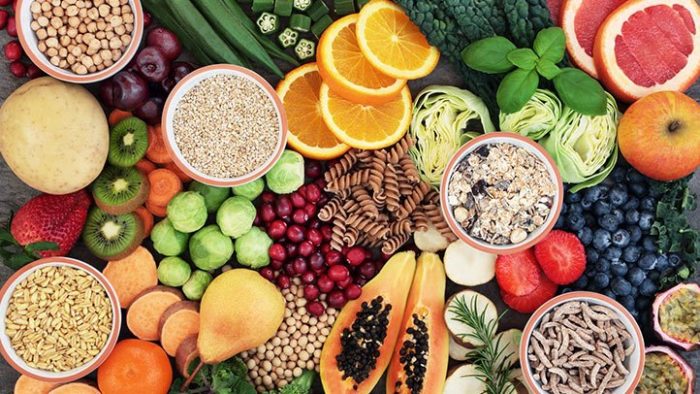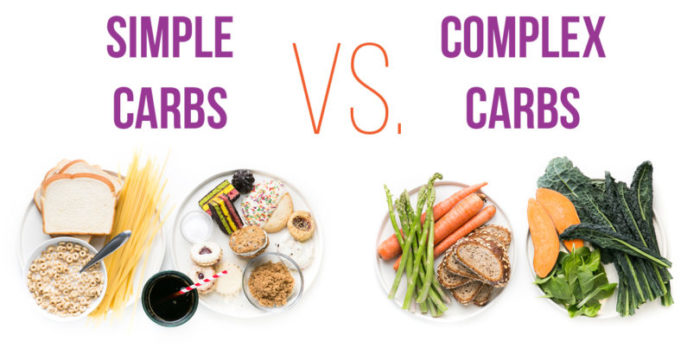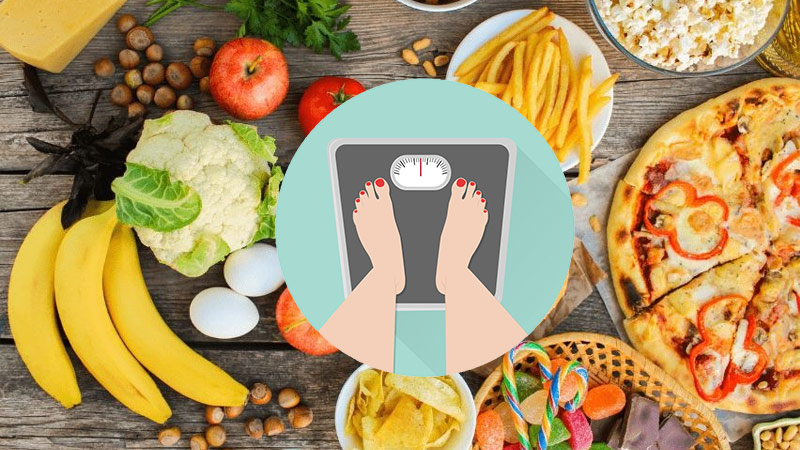
Could Carb Cycling Help Crush Your Body Fat Goals?
If you’re looking to lose fat, you’ve no doubt heard of countless quick fix ways to lose weight and boost toning. With so many fads, diets and hacks out there, it’s hard to know what will actually help you move the fat or what could potentially ruin your hard-earned gains.
A healthy diet should help you lose fat safely, whilst maintaining your muscle and giving you the energy you need to live your life and slay in the gym. Believe us, it’s a tall order to fill.
We’ve heard carb cycling thrown around in the locker room, and we’ve looked into it to find out if it can really help you lose fat and keep your performance high in the gym.
This article will bring you the science and a breakdown of what this diet is, so you can find out if it’ll work for you.
Article preview:
- What is carb cycling?
- Factors that might influence carb cycling
- Carb cycling – the science
- But will carb cycling help me lose weight?
- Carb cycling for muscle growth
- How does a carb cycling diet work?
- What carbs should I be eating?
- The final word
What is carb cycling?
Carb cycling is where you alter your carbohydrate intake to adapt to your situation. You can do it on a monthly, weekly or even daily basis to achieve your desired results.
By carefully planning your carb intake, you should be able to lose fat, keep your gym performance on track whilst dieting and even get over a weight loss plateau.
You do this by planning out when you need the carb energy the most and altering your diet, so you get the maximum benefit from the nutrient. For example, if you know you’re going to smash a huge legs day, you can plan your carbohydrates around it.

Factors that might influence carb cycling
There are a number of factors that may influence the way you plan your carb cycle. Here are a few things you might want to think about before you start to plan your diet.
- Rest/training days – If you’re not working out in the gym, you might not need as much energy as if you were smashing a hard-ass weights session. You can alter your carb intake to reflect the needs of your training program.
- Refeeds – If you’re on a diet for the long term, a couple of refeed days (where you eat hella carbs) could refresh your body ready for more dieting.
- An event or competition – This depends on your discipline. If you’re heading to a lifting meet, you’ll need to carb load before to prep your body with the energy for an optimal performance. If you’re training physique, you should drop your carbs to ensure maximum shreds.
- Body goals – You might be on the fat loss train or aiming to put muscle on. You can cycle your carbs to suit your needs.
- Training types – You can tailor your carb intake right down to the workout you’re doing. If you’ve got a longer, more intense session planned than usual, you’ll likely need more carbs to get the best out of it.
What approach should I use?
Essentially, there’s no set plan for carb cycling. You have the freedom to alter it to suit you and your fitness goals. You would normally leave your protein the same, just change your carbs and fat to accommodate your activity levels and keep your calories at a reasonable level.
If you’re dropping your carbs, boost your fat a little so you don’t get too hungry throughout the day. Be careful though, if you drop your carbs too far and raise your fats, you might slip into ketosis. While it will likely make you lose fat, it’s not a healthy state to be in, girl.
Carb cycling is more advanced and adaptive than using a standard macro nutrient breakdown. As it’s constantly changing, you need to be pretty on the ball to get this one perfect. If you’re a total beginner to nutrition and training, it might take you a while to nail the cycle.
Carb cycling – the science
The practice of carb cycling is relatively new and there isn’t a huge amount of research into it at the moment.
However, because carb cycling is fundamentally about meeting the needs of your body, we can look into how consuming these nutrients impacts you physically.
With carb cycling, your high carbohydrate days are in place to help you refuel. That means replacing your muscle glycogen [1], which can improve performance and even potentially help to reduce the breakdown of muscle [2].
By changing your carb intake, you can also impact your insulin levels. Research indicates that low carb days might also improve you insulin sensitivity [3], which is a key signifier of a healthy body and lifestyle.
On top of that, science says that a carefully planned period of high carbs can make your weight and appetite hormones work more efficiently [4] [5].
According to all this, you should feel all the benefits of carbohydrates, and optimize your body to continue working out, whilst on calorie-controlled diet.

But will carb cycling help me lose weight?
As many of us know well by now, being in a calorie deficit will make you lose weight. That means burning more calories through activity and exercise than you’re eating in food.
The benefits of carb cycling are that you can pair it with a calorie restricted diet, yet still plan out your food consumption to get the most out of your carbs, and therefore your workouts.
If you’re in a calorie restricted diet, and you plan your carbohydrates around your workouts, you can get enough energy to smash your session, and still be in a position to lose fat.
Overall, carb cycling could help you lose weight if paired with a healthy diet and a calorie deficit.
Carb cycling for muscle growth
By being smart with your carbs, you can even influence muscle growth.
Planning your carbs around your workout can have some big impacts on your body. Not only will eating before fuel you with the energy you need to do a powerful workout, by eating carbs immediately after you train, it can improve protein synthesis and replenish your glycogen stores.
Although, if you want to gain muscle, you’ll have more luck if you’re in a calorie surplus than cutting back. In which case, cycling your carbs might not be necessary, you should just plan them well.
How does the carb cycling diet work?
If you’re going to opt for this diet style, take a look at this guide on how to do carb cycling.
It’ll give you more of an idea of how you can plan out your carbs, based on a week of exercise.
| Day | Exercise Levels | High or Low Carbs? |
|---|---|---|
| Monday | Weight training with HIIT | High Carbs |
| Tuesday | Weight training | High Carbs |
| Wednesday | Rest Day | Low Carbs |
| Thursday | Weight training with HIIT | High Carbs |
| Friday | Weight training | High Carbs |
| Saturday | Rest | Low Carbs |
| Sunday | HIIT | Moderate Carbs |
This is just a guide. Only you know how hard you work in each session of weight or HIIT training. Experiment a little and find out what you need in terms of high or low carbs, so it suits you and your training plan.

What carbs should I be eating?
The thing with carbohydrates is, they’re available in a huge range of foods. We see them all the time in sugar treats and snacks. However, to get the most benefit out of the carbs you use, you’re better off opting for the healthiest variation.
There is such a thing as ‘good’ and ‘bad’ carbs. A bad carb is usually a simple carbohydrate, which comes from refined sugar. The makeup of these carbs is very simple, as the name suggests, and they break down quickly in your body, giving you a short, sharp burst of energy.
This energy burst is often followed by a crash, and most simple carbs don’t offer any other nutritional benefits – this is why they’re often called ‘empty carbs’.
A good carb is a complex carbohydrate. They break down much more slowly in your body, giving you a more sustained energy boost, perfect if you’re going to the gym for a big workout. On top of that, complex carbs are usually packed with fibers and vitamins, so you get multiple health benefits from them.
You should use these good carbs in your carb-cycling diet:
- Wholegrains – These are packed with slow release carbs, and plenty of nutritious fibers and vitamins. Some of the best wholegrain foods out there are brown rice, rolled oats and quinoa.
- Tubers – when cooked right, potatoes and sweet potatoes can provide you with an excellent source of carbs, along with other handy nutrients. Just please don’t cook them like French fries.
- Vegetables – We don’t need to tell you girls that veggies are good for you, everyone knows that. A lot of them also contain carbs, so explore your options to find the best one for you.
- Fruit – We’re not talking about smoothie here, girl. Eat a whole piece of fruit and you’ll benefit from natural sugars, and health boosting fibers too. As soon as you blend them up you’re losing a lot of that precious fiber, so you’ll miss out on those extra benefits.
- Legumes – Beans and peas are an excellent source of carbs. They’re also packed full of vitamins, minerals and fibers that’ll keep you healthy.
The final word
With careful planning, you can cycle your carbs to suit you and your goals. When you know how to time your cycle, it has the potential to optimize your workouts and your diet.
Experiment with your carb intake, find the right amounts for you and stick to healthy carbohydrates. Once you’ve got that nailed and you’re in a calorie deficit, you should be in a great position to lose weight and still get the most out of your training plan.
Looking for more myth-busting information articles from your girls at SpotMeGirl? Check these out:
- What Does Pre-Workout Do?
- Top 5 Tips for Finding Your New Perfect Workout Partner
- Essential Lifts Ever Woman Should Know
References:
[1] JL, I. (1998). Glycogen resynthesis after exercise: effect of carbohydrate intake. – PubMed – NCBI. [online] Ncbi.nlm.nih.gov. Available at: https://www.ncbi.nlm.nih.gov/pubmed/9694422 [Accessed 8 Oct. 2018]. [2] Børsheim E, e. (1985). Effect of carbohydrate intake on net muscle protein synthesis during recovery from resistance exercise. – PubMed – NCBI. [online] Ncbi.nlm.nih.gov. Available at: https://www.ncbi.nlm.nih.gov/pubmed/14594866 [Accessed 8 Oct. 2018]. [3] GM, R. (1979). Effects of differences in amount and kind of dietary carbohydrate on plasma glucose and insulin responses in man. – PubMed – NCBI. [online] Ncbi.nlm.nih.gov. Available at: https://www.ncbi.nlm.nih.gov/pubmed/389023 [Accessed 8 Oct. 2018]. [4] Dirlewanger M, e. (2000). Effects of short-term carbohydrate or fat overfeeding on energy expenditure and plasma leptin concentrations in healthy female subjects. – PubMed – NCBI. [online] Ncbi.nlm.nih.gov. Available at: https://www.ncbi.nlm.nih.gov/pubmed/11126336 [Accessed 8 Oct. 2018]. [5] Poehlman ET, e. (1986). Genotype dependency of the thermic effect of a meal and associated hormonal changes following short-term overfeeding. – PubMed – NCBI. [online] Ncbi.nlm.nih.gov. Available at: https://www.ncbi.nlm.nih.gov/pubmed/3510362 [Accessed 8 Oct. 2018].![Best Meal Replacements for Women in 2022 [Updated] 11 Best meal replacements for women](https://heyspotmegirl.com/wp-content/uploads/2019/04/what-is-whey-protein-e1554285730885.jpg)

![Best Super Greens Powder for Women in 2021 [Updated] 13 Woman Running in the Park](https://heyspotmegirl.com/wp-content/uploads/2020/06/WomanRunningPark-390x220.jpg)

